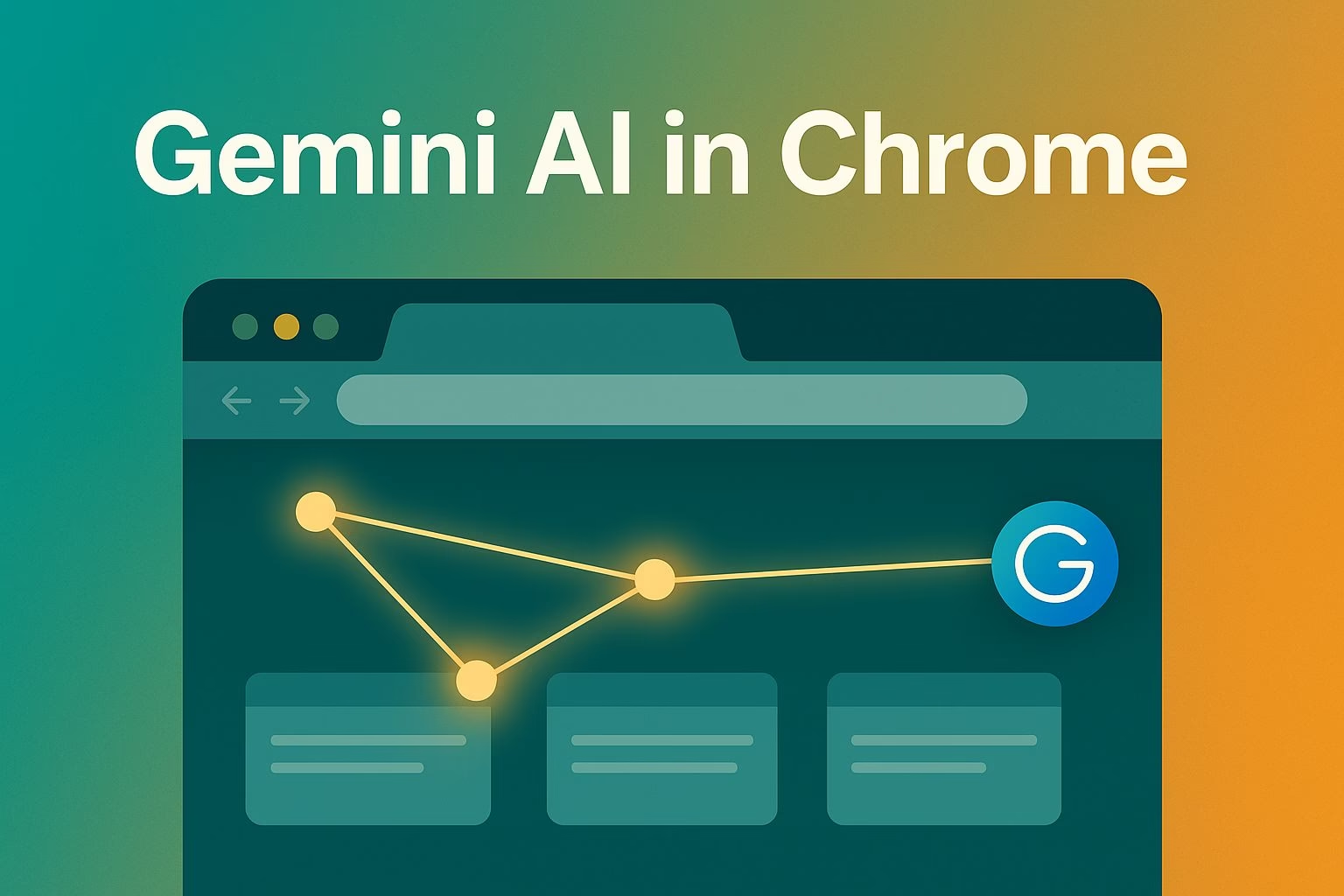Google brings Gemini AI into Chrome with multi-tab context
Key takeaways
- Google has embedded Gemini into Chrome for U.S. desktop users.
- New features include multi-tab context, an AI Mode in the address bar, and previews of agentic task automation.
- Chrome shifts from a passive browser to an active assistant, creating new opportunities and risks for users and publishers.
Google has just taken a major step by embedding Gemini directly into its Chrome browser for U.S. desktop users.
This isn’t a small experiment. It changes how we use the world’s most popular browser by putting AI tools into places we already rely on every day.
A new Gemini button now lives inside Chrome, letting you analyze information across multiple tabs without juggling windows.
That might sound small, but it turns AI from something you open in a separate app into something woven into daily browsing.
Later this month, Chrome’s address bar will include AI Mode. Instead of typing single searches, you’ll be able to ask multi-part questions and follow up without losing context.
This puts Gemini directly where we already navigate the web.
Google also previewed future “agentic” features. These are tools that can handle multi-step tasks automatically, like booking appointments or ordering groceries.
If that rollout sticks, Chrome could shift from being a passive search tool to an active assistant.
How Gemini changes the way we use Chrome
The most immediate change is context across tabs. Until now, if you wanted AI to help summarize or compare information, you had to copy and paste text into a separate app.
With Gemini built into Chrome, you can highlight across multiple tabs and get an instant breakdown.
For researchers, students, and everyday users, that cuts out a lot of friction.
The address bar update is another key move. Instead of typing a single query and sifting through results, you can ask layered questions right where you already search.
For example, someone planning a trip could type a broad question about flights, then follow up with questions about hotels, weather, and local events without opening new tabs.
Chrome keeps track of the thread.
This changes search from being one-off and reactive to something more conversational.
That’s not just a new feature; it alters user expectations of what a browser should be able to do.
Over time, people may expect AI in the browser to handle tasks that used to require several apps.
The rise of agentic browsing
Google’s preview of agentic features takes this further.
Instead of you clicking through menus, the browser itself will manage steps like finding an open appointment, filling in details, and confirming the booking.
It’s a shift from assistance to automation.
Competitors like Arc and Opera have already been experimenting with AI features, but their reach is limited.
Google holds the advantage because Chrome is the default browser for billions of users. By rolling Gemini into Chrome, it skips the adoption problem. People don’t have to download a new product.
They just update the browser they already use.
This puts pressure on rivals. Building a new browser from scratch looks less appealing when Google can inject AI into one that’s already dominant.
The bar is no longer whether a browser has AI, but how deeply that AI can manage tasks.
Risks and questions around AI in Chrome
Embedding Gemini into Chrome isn’t just about convenience. It raises questions about data, control, and trust.
When your browser becomes an assistant, it sees what you search, what you read, and in some cases what you buy. That creates a huge pool of personal data.
Users will need to decide how comfortable they are letting Google’s AI process this information directly inside their browser.
There’s also the risk of over-reliance. If Gemini starts handling multi-step tasks automatically, people may stop double-checking details.
A missed context or a flawed recommendation could lead to mistakes in things like scheduling or purchases. Google will need to show how it plans to keep AI transparent and accountable.
Finally, the rollout could create uneven access. Right now, the update is for U.S. desktop users.
That means international audiences and mobile users may wait months before seeing the same capabilities, leaving a fragmented experience for the near future.
What this means for everyday browsing
For most users, the first change they’ll feel is speed. Researching across tabs, following up on queries, and summarizing text will take fewer steps.
That shift will make Chrome not just a browser but a personal workspace.
This also reshapes how people discover content. Instead of scanning through search results, more users will get answers directly in the address bar or Gemini sidebar.
That could reduce traffic to some sites while rewarding others that AI finds more reliable. Bloggers, affiliate marketers, and publishers will want to track how much their traffic depends on Chrome-driven discovery.
The long-term play is even bigger. Once Chrome can manage tasks like booking and shopping, it will no longer just show the web; it will act on it.
That’s where browsing starts merging with automation, and where Google’s strategy could rewrite expectations for what a browser should do.

